This blog was adapted from our latest white paper, The Way Forward, which you can download here.
The Way Forward
We’re living in a vastly different world than just a month ago, but the goal of modern marketing remains the same:
Sending the right message through the right messengers to the right audience.
In the wake of the coronavirus pandemic, marketers working across all industries have been forced to scrap plans and shelve playbooks, thrust into an uncertain and quickly-changing landscape. As consumer behavior has shifted, marketers have re-defined their strategies to weather the storm.
In the first few weeks of the pandemic, industries emerged from reactive silence to action, showing incredible creativity and resilience. While no one has a crystal ball, one thing is certain – customers are looking to the future. It is imperative for brands to listen and take the necessary steps to respond promptly to these needs in order to emerge on the other side of this crisis supported by loyal customers.
Transformation happens fast – how should brands support consumers in every step of the way?
Transitioning from “Crisis” messaging to “Resilience” messaging
Many businesses are still stuck in the Crisis mindset, sending out delayed responses to the initial shockwaves of the pandemic. But human beings are remarkably adaptable, and many of us have already come to terms with life in this temporary #NewNormal.
Indeed, consumers are rewarding brands that offer value and a sense of normalcy. According to recent Twitter data, 64% of users said that brands should continue advertising, with half noting ads even provided a sense of normalcy. This is why talking points that were relevant just a few weeks back are already at risk of sounding out of touch.
“In these difficult times…” “We’re in this together”
How are consumers feeling now that they’ve adjusted to new routines and mindsets? How can brands address their current needs and concerns?
Preparing for life + business in the Recovery phase
Consumers are already looking to the future with a sense of optimism and anticipation. Searches for “future home,” “future party,” and other forward-looking terms on Pinterest are indicative of a global population busy planning for what comes next.
However, we can’t expect consumers to immediately return to their old habits in one swoop. Fear and anxiety will be hurdles that brands will need to address during the “awakening” that we will all go through. Focusing on value-driven content will be critical to connect meaningfully with audiences. From educational materials to entertaining feel-good stories that replace anxiety with reassurance, these narratives will be key in taking the dreams consumers have in their heads now and stirring them into action.
Entertainment
Looking at the Numbers
Sponsored content from entertainment brands saw a 6-week low on March 6th, dropping just as the industry received one of its biggest blows, the cancellation of SXSW, and five days before the NBA officially canceled its 2020 season. However, sponsored activity has been on the rise as entertainment businesses have put new plans into action to keep content flowing and their customers engaged.
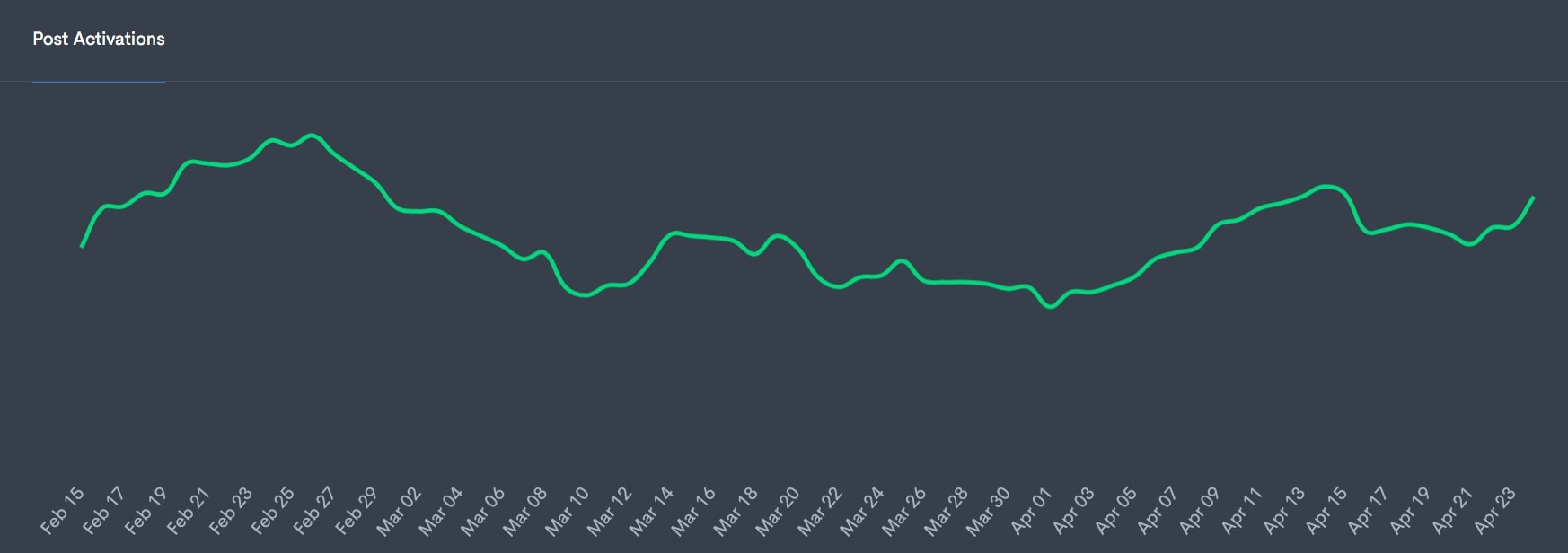
#IsItCancelledYet – The Entertainment industry responds to the challenges of COVID-19
With the need for content at an all-time high, entertainment brands have been explorin
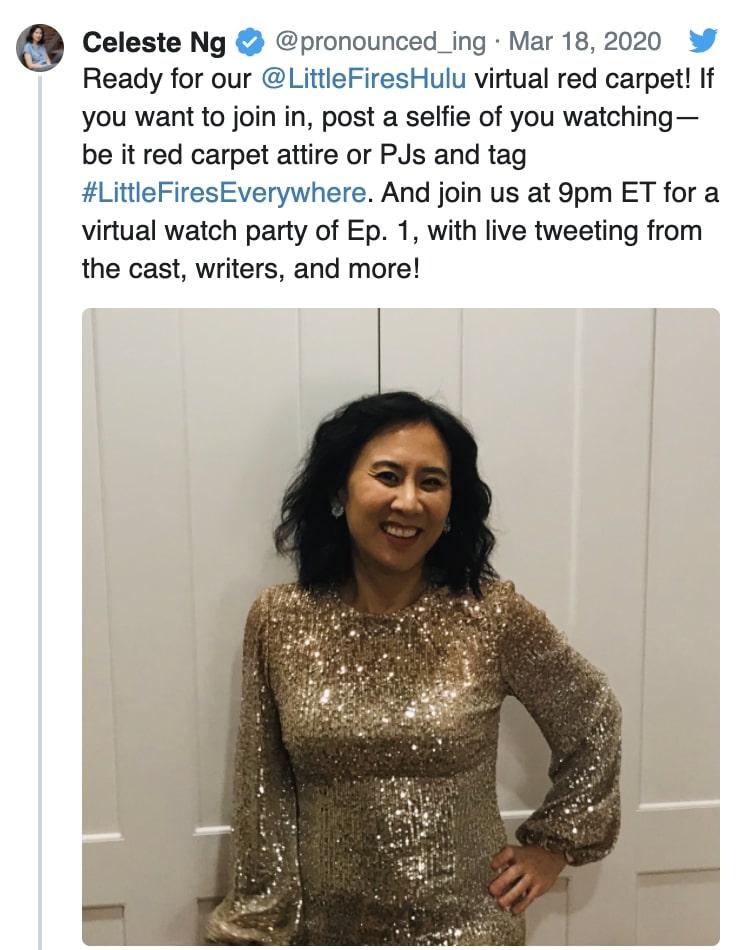
g innovative ways to stay connected with customers despite rising challenges.
Human beings need entertainment to keep our spirits up through difficult times. Our favorite songs, movies and sports teams help us stay centered as we navigate new challenges, which is why it has never been more important for entertainment brands to engage with consumers via unique digital and interactive experiences.
From virtual red carpets and concerts to stay-at-home watch parties to esports challenges, brands need to develop creative solutions to engage with isolated audiences that are increasingly relying on their mobile devices to stay connected.
Even when it’s time for cameras to roll, athletes to hit the field or seats to be filled, brands should continue to connect with customers at scale via digital experiences that extend far beyond the limits of a physical event.
When it comes to compelling digital experiences, brands should consider partnering with the leading authorities: influencers.
Beauty
Looking at the Numbers
Beauty brands have continued to sponsor content on social media at a steady rate since the pandemic began, indicative of the industry’s extensive experience with social media and success with models such as DTC Ecommerce. Without access to key retailers, customers are relying even more on digital marketplaces like Amazon, social media, or company websites to find and purchase the products they need.
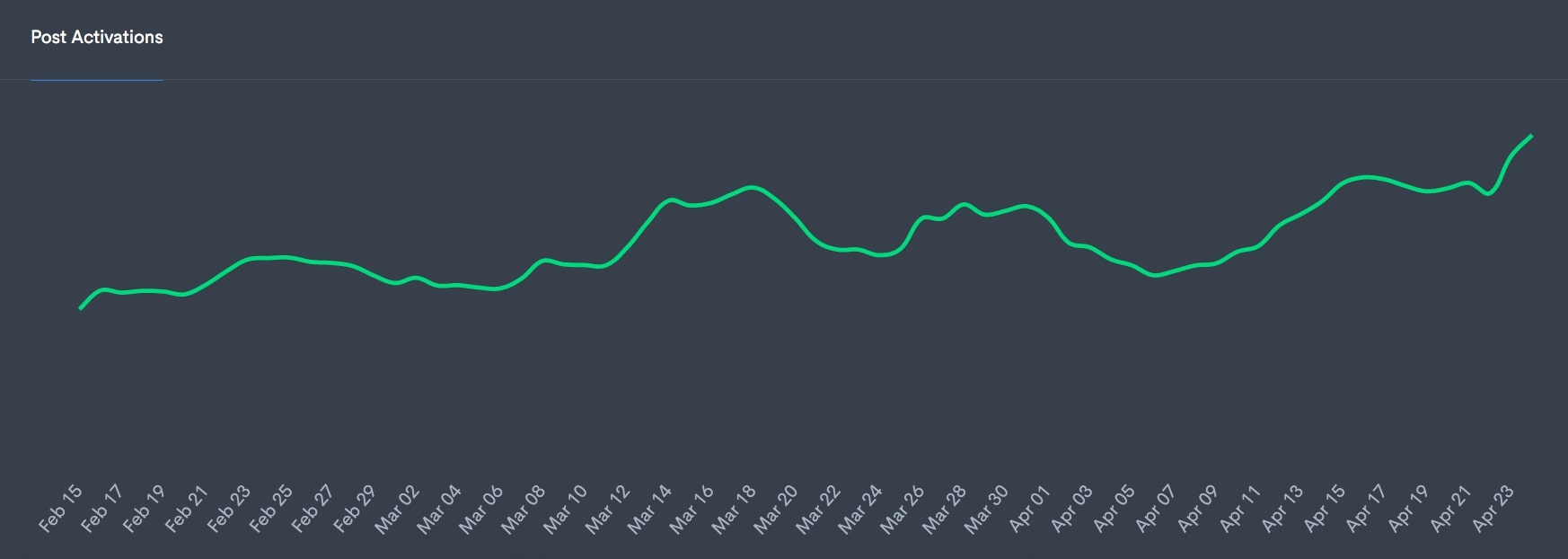
Self-Care Has Never Been More Relevant
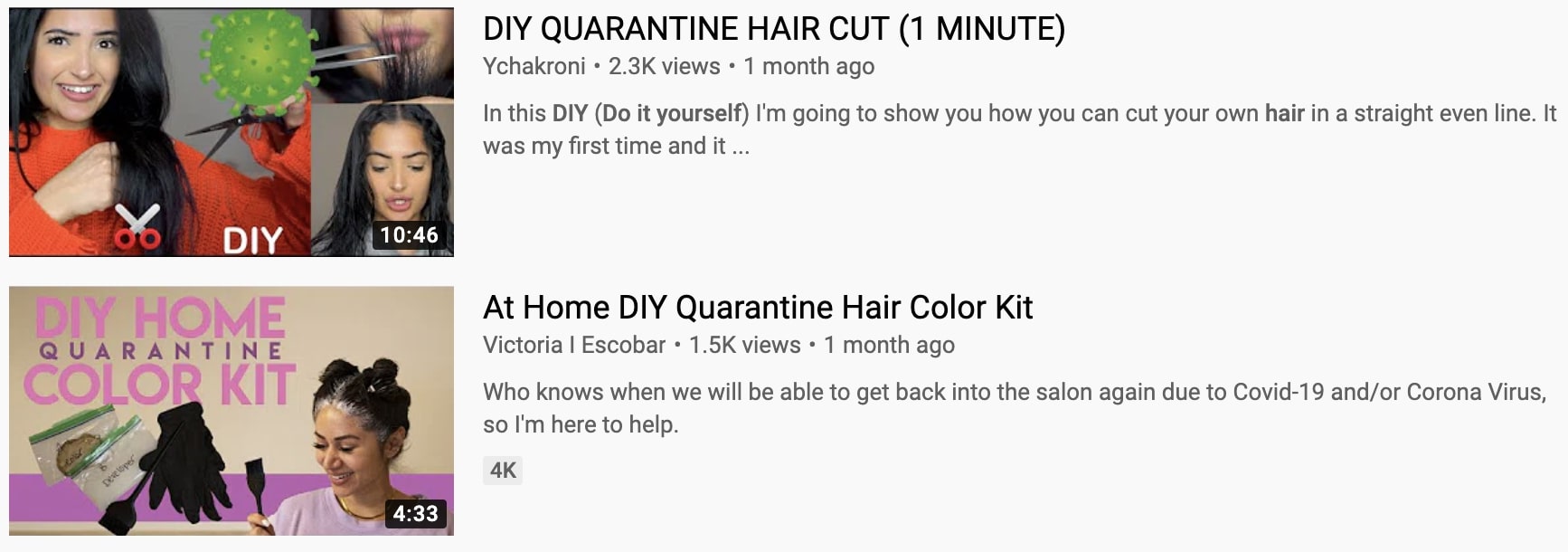
Over the past decade, beauty brands have been repositioning many of their products to fit the growing self-care movement. Now with people stuck at home, self-care, home remedies, and has never been a more relevant way to connect with consumers.
The beauty industry plays a huge role in the self care movement that’s been steadily growing and has only strengthened during this whole period. Consumers aren’t expecting their favorite brands to go silent – so don’t!
Fashion
Looking at the Numbers
Fashion and Apparel brands continue to sponsor content at a steady rate, with the industry experiencing a significant increase over a six week rolling average. With production shoots halted, brands are leaning into flexible models such as influencer marketing to keep up the flow of relevant content, as well as impressive leaps in digital tactics such as virtual fashion shows, chief among them the upcoming all-virtual (and gender neutral) London Fashion Week.
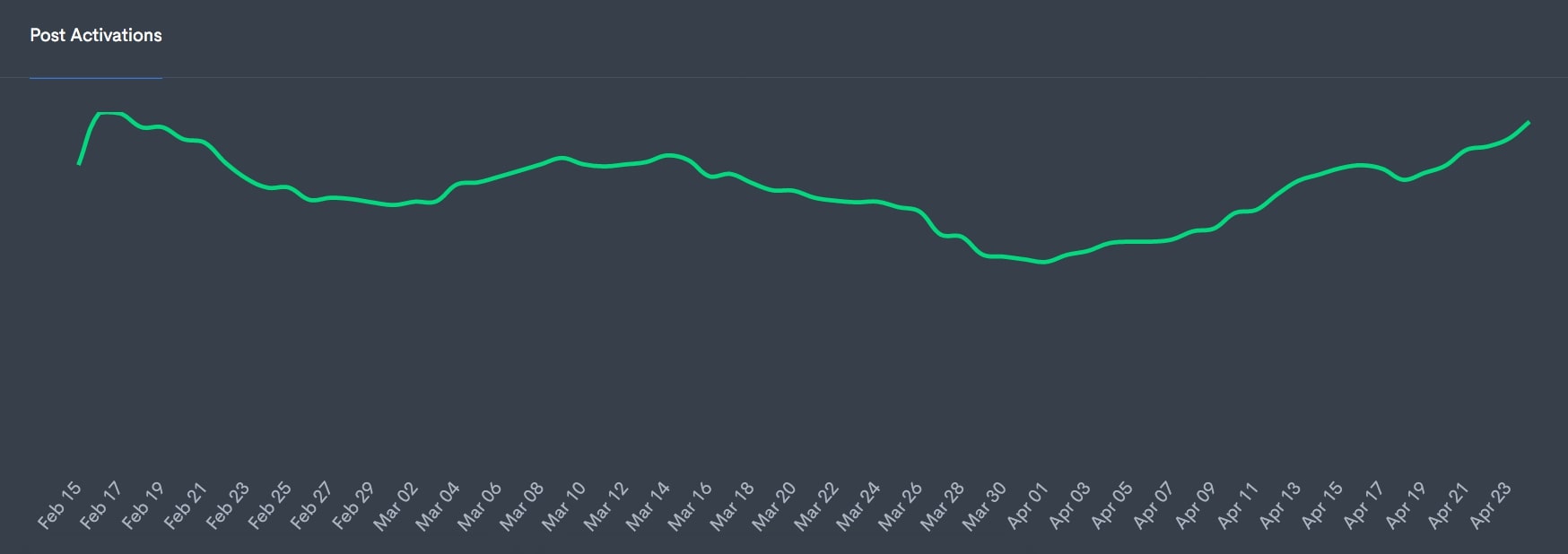
Clothing and fashion have always been shaping forces in society and that’s certainly true now. What we wear impacts us not only on a physical level but also how we perceive ourselves and the world around us. As our lives have changed, so too have our wardrobes, and it’s up to fashion brands to meet the needs of consumers in these changing times.
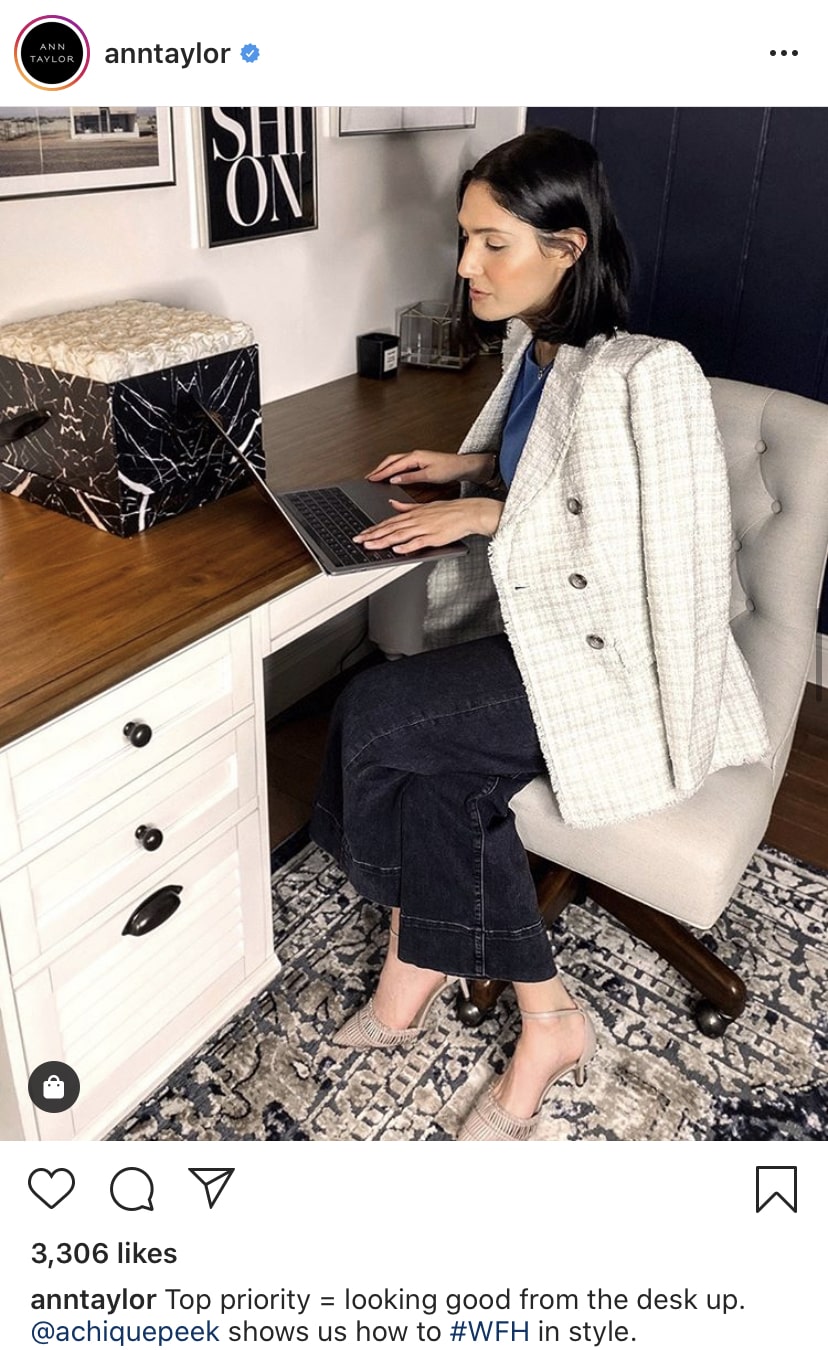
CPG
A Look at the Numbers
CPG brands have continued to sponsor influencer content with intermittent spikes in activity. On the whole, CPG influencer spend is up by about 5%, with many brands in the space experiencing sales lifts as consumers prepare their homes for life indoors. Nielsen data shows that as of March 21st, upwards of 35% more people had shopped online for CPG items compared to a typical week.
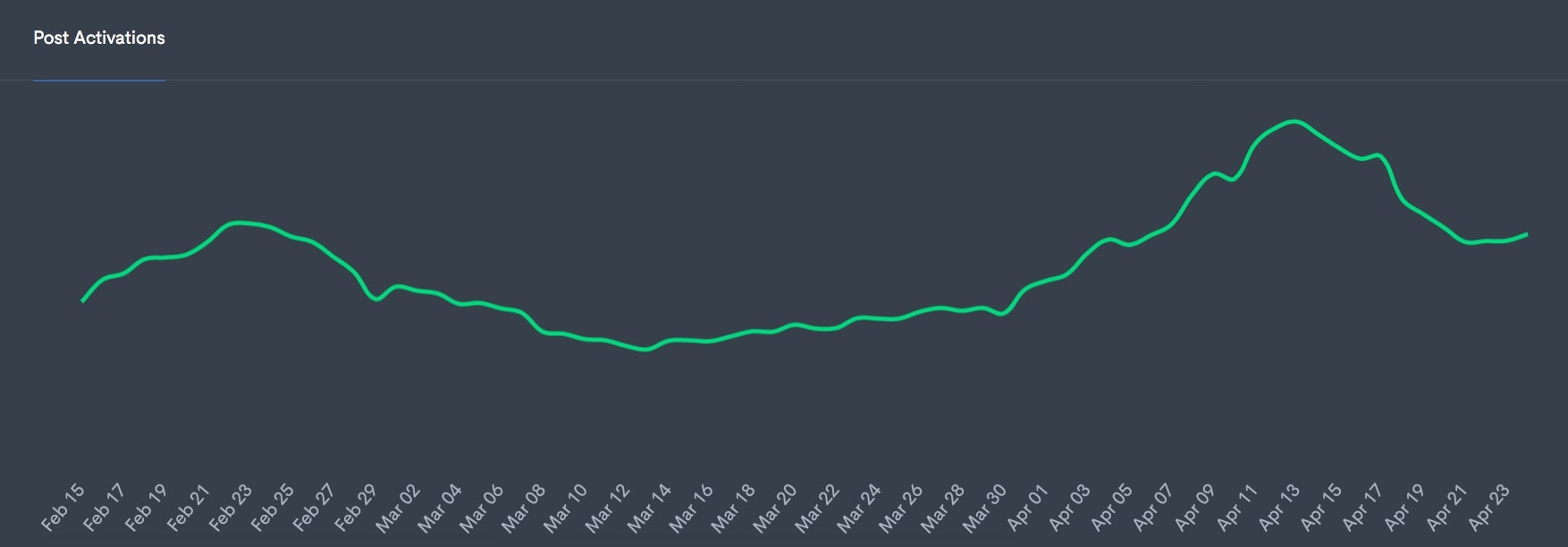
CPG products are essential – so is the need to stay connected
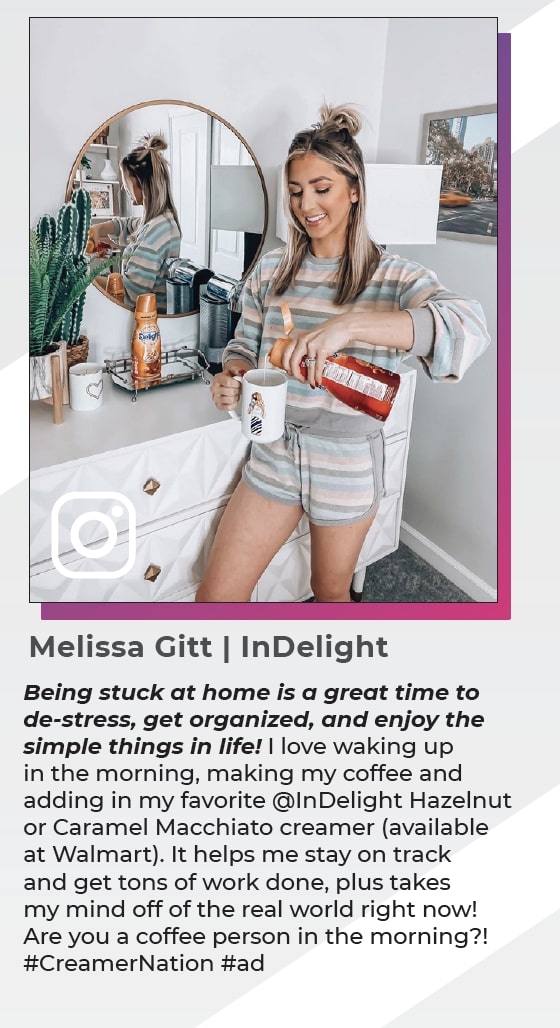
CPG brands have been indispensable to society as we’ve navigated the initial stages of the pand
emic. While we’ve sheltered in place and come up with ways to overcome this challenge, we’ve relied on a plethora of products to keep our families healthy and safe. This is a critical time for consumer trust and brand management, as the experiences consumers have now will certainly shape their purchase decision in a post-COVID world.
Consumers look to CPG brands as their day-to-day essentials and find in them the comfort they need to feel healthy and safe. The road to recovery is a critical period where brands need to make sure their customers feel reassured and supported. These feelings will last even after this historic event is long behind us.
Travel + Hospitality
Looking at the Numbers
Travel and hospitality brands have cut back on sponsored content as well as all other forms of marketing to help curb the loss in sales. The initial weeks of our Data Tracker indeed show an industry grappling with an unprecedented level of disruption.
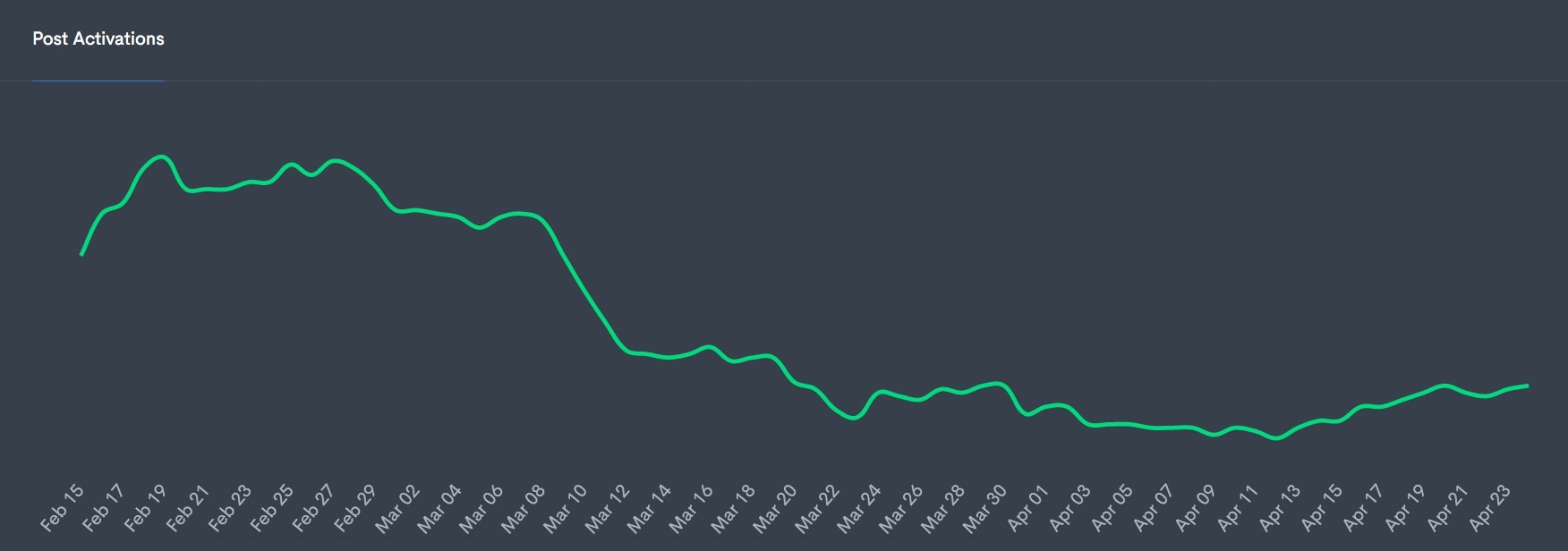
Wanderlust to Fuel the Future of Travel
The travel and hospitality industries have been deeply affected by COVID-19, yet positive signs are already beginning to make headlines. In some European countries, governments are beginning to test the waters of opening public activity in a safe and controlled capacity.
As society navigates its way through the Resilience phase, and with small but reassuring signs of wanderlust returning, it’s more critical than ever for brands to keep their audiences engaged and eager to roam. During this period of reduced travel, marketers should be doing everything they can to ensure their brands stay top-of-mind and ready for when health officials give us the green light.

As the world reopens, we anticipate customers will need to pass through an “awakening” period and this will be especially true for travel. Brands should remain sensitive to their messaging during the initial stages of Recovery, as these initial experiences will be critical for growing consumer confidence.
Restaurant / QSR
A look at the Numbers
Restaurant and food businesses were some of the hardest hit and experienced this early on in the pandemic’s development. Corresponding with this is a significant decrease in paid sponsorships starting at the end of February.
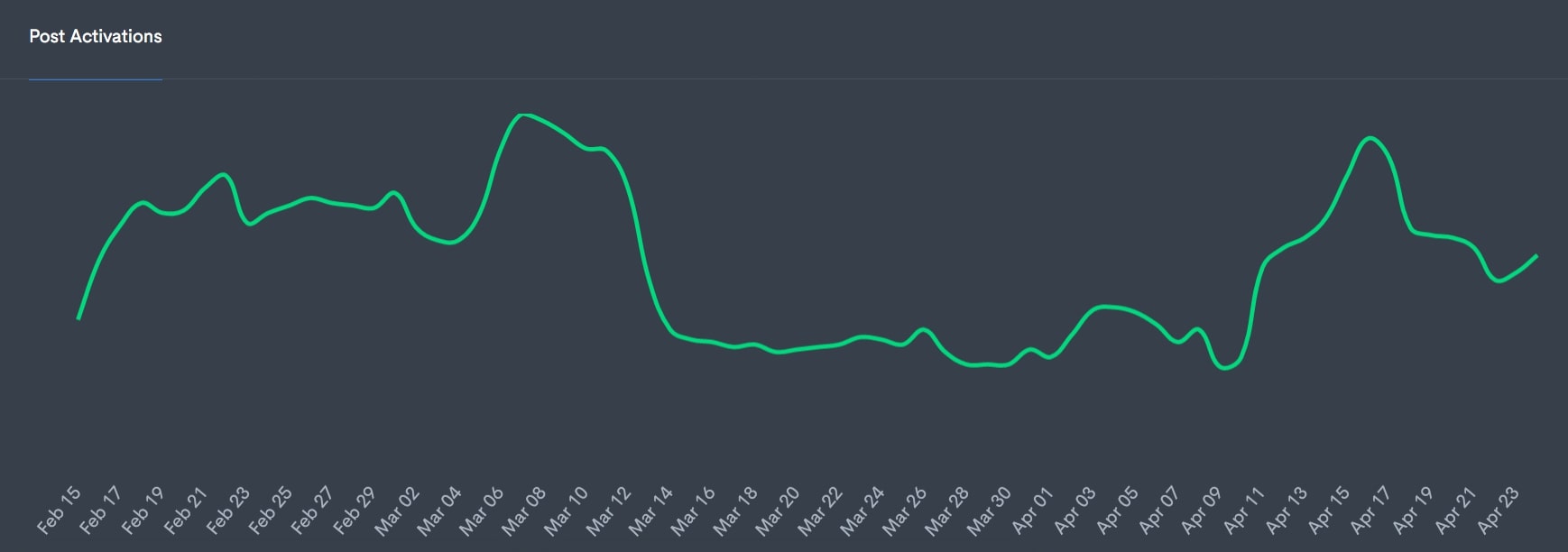
Keeping the Ovens Hot: How Businesses Are Adapting
Restaurants and food businesses have been affected by the loss of physical storefronts, but were also some of the first to find innovative solutions to keep business running and stomachs full. They’ve received a tremendous amount of support from their local communities to help them overcome these challenges, especially through social media-first and other digital-first initiatives.
Food is the engine of society, and businesses have worked tirelessly over the past three months to ensure the world stays fed and turning. The innovations that are put in place now to help restaurant and QSR companies stay afloat will ultimately shape the eating and shopping habits of tomorrow, and brands should prepare themselves for the needs of future consumers with digitally-minded strategies that begin today.
Automotive
Data shows that automotive brands continue to sponsor content at a steady rate despite significant challenges in the face of COVID-19. With productions halted and dealership closed, brands are turning to flexible marketing tactics such as virtual showrooms and partnering with influencers to stay connected with consumers, tools that can be deployed quickly and more efficiently in a world of ongoing isolation.
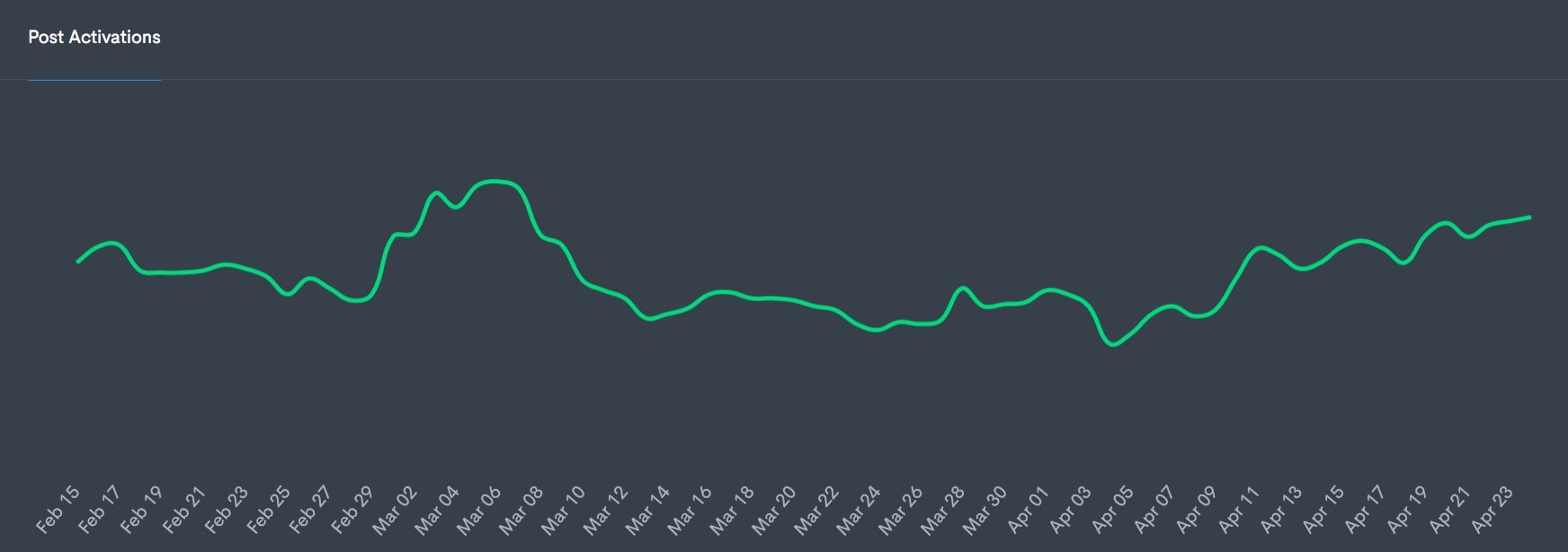
With Society Stuck in Neutral, Auto Brands Are Moving Forward
Automotive businesses face many difficulties in the wake of COVID-19, from a sluggish consumer base to manufacturing woes to critical event cancellations. However, positive signs have begun to trickle in, such as Cox Automotive daily estimates show a slight uptick in used and new sales towards the end of March and early April. Meanwhile a survey by car comparison website Car Wow show that over half of people still intend to change their vehicle in the ‘not too distant future.’
The auto world is incredibly resilient, with many key brands already displaying the same level of tenacity and creativity that helped the auto industry endure similarly troubled times such as the 2007 financial crisis.
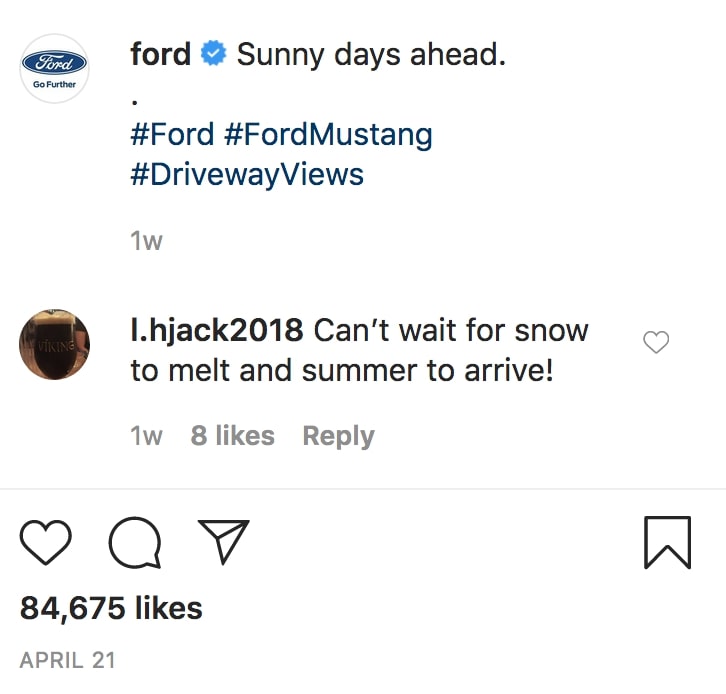
Major auto brands have continued to roll out marketing campaigns designed to comfort audiences and educate them of the new and exciting ways they can begin their car-buying journey, from digital showrooms to home deliveries. The brands that focus on the long-term by building invaluable brand awareness and customer loyalty now will be the ones to shift-gears faster and get ahead of the competition when customers emerge from this period of isolation and are ready to hit the road once more.
NEXT, NOW, BEYOND
Our current situation is defined by unprecedented limbo and stagnation. As societies shelter in place, consumers are busy making plans, drafting dream boards and writing checklists of all the things they hope to soon be able to do. World leaders assure us that, if the proper steps are taken, global activity will most certainly bounce back stronger than ever, and initial recovery plans are already underway. It’s critical for brands to understand that major cut-backs on advertising now may cut expenses in the short term, but will most certainly affect their resilience as society begins to emerge from this period of dormancy.
Influencer Marketing: Relevant, Trustworthy, Reliable
We know that consumers are spending more time than ever on social media, and as a result they’re getting even closer to the content creators they admire and relate to. In times of unparalleled uncertainty, consumers are relying on influencers to discover fun activities, learn new skills, plan future events and decide what products to try and trust. That’s why brands from across every industry are relying on influencer marketing to tell their messages and share their stories.
As you’ve seen from the many examples above, brands and influencers have been hard at work collaborating across all of social media to produce engaging and useful content at scale. These experiences are laying the foundation for long-lasting connections between brands and a new consumer base that is eager to experience life as we know it once more, and only proves that even in the midst of so much change, the power of human connection is a constant.
In Conclusion
The most successful companies will be defined by their ability to adapt and respond in-step with the global consumer base. Just like people right now are balancing their immediate problems with looking to the future, companies need to be creating strategies based on adapting to today while innovating for the Post-COVID world that is just on the horizon. It’s a balancing act that requires a comprehensive/updated strategy with communication strategies designed to reach people where they are now, and where after emerging from the global consumer awakening that’s soon to come. This is an opportunity for companies to innovate at scale, and the choices they make now will set the stage for their future success.
And what is on the horizon? Based on what we’ve seen, our post-COVID world will consist of a New Normal categorized by permanently shifted consumer behavior, altered work habits, and new economic realities. Consumers will cook more, create more, learn more, and become even closer to the content creators that influence their decisions.
***
Want more up-to-date resources on influencer marketing and COVID-19?
Visit our new tracker that’s designed to help marketers stay on top of the current conversation around coronavirus, and provide resources on how to navigate influencer marketing during this unprecedented situation.
Our webpage tracks live data from different platforms such as Twitter and Instagram to provide real-time insights into how the social media sphere is responding to COVID-19.
Open Influence is a global multi-award winning influencer marketing company focused on generating value for brands across all the major social media platforms.
Having been a pioneer in the influencer marketing space for more than 7 years, we have established a successful track record working with top brands from a variety of industries including fashion, lifestyle, automotive, entertainment, technology, CPG, pharmaceuticals, and more.

